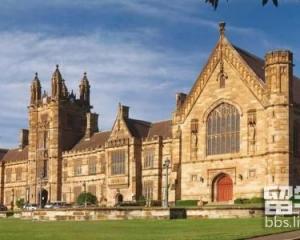2017年留學生入籍加拿大政策放寬(圖)
美國總統特朗普上臺之后,公布實施的一系列政策引發了巨大的爭議。在美國的留學生們,不可避免地被牽扯到了這些爭議的風暴中。相對于美國的暴風驟雨,同在北美的加拿大則是另外一番景象。紐約時報近期對這個現象進行了專門的報道,下面和查字典小編一起來看看吧。

作者:CRAIG S. SMITH;來源:紐約時報
11月,紐芬蘭圣約翰斯北大西洋學院里的一名韓國留學生。
紐芬蘭圣約翰斯在這里的北大西洋學院(College of the North Atlantic),穿著羽絨服和連帽衫趕去上課的學生中,以紐芬蘭當地的白人為主。一名年輕的中國姑娘站在那里,和兩個同學討論自己的將來。她的這兩個同學分別是一個來自孟加拉國的男生,和一個來自韓國的女生。
這里的環境真的很好,所以我想,為了健康,我也會留下來,來自中國東部省份山東的費潔(音)說。另外兩人說,他們也打算在畢業后留下來,最終成為加拿大公民。
他們選擇的道路絕非偶然。加拿大目前擁有數十萬國際學生。這些國際學生是一項政府戰略的一部分。該戰略旨在通過大學系統篩選接受過良好教育、技術熟練的勞動者,借此改變加拿大的人口結構。這是針對加拿大人口老化,出生率放緩的一個解決辦法,同時也是為了提振該國的稅基。
11月,聯邦政府對其名為快速通道(Express Entry)的電子移民挑選系統進行了調整,以降低國際學生成為公民的難度。此外,一項有待參議院批準的議案將恢復一項規定,把學生在加拿大留學時間的一半算在獲得公民身份所要求的居住時間里。
該國需要富有才華的移民去補充其分散、老化的人口。據負責移民事務的加拿大聯邦移民、難民及公民部(Immigration, Refugees and Citizenship Canada)稱,移民已占該國勞動力年凈增長量的75%,并且預計會在10年內達到100%。
這項戰略是建立在一個已有十年之久的趨勢上的,2014年被正式提出。它似乎正在見效。在2015-16學年,加拿大的國際學生人數增加8%,增至逾35萬人,大約相當于該國人口的1%。美國的國際學生人數還不及該國人口1%的三分之一。
在加拿大留學的國際學生人數預計會在10年內達到近50萬。而加拿大國際教育局(Canadian Bureau for International Education)進行的一項調查顯示,超過一半的外國學生希望留下來,成為加拿大公民。
加拿大國際教育局是一個由教育機構組成的協會。其主席卡倫麥克布賴德(Karen McBride)說,就我們的教育制度在品質方面的美譽,我國寬容、安全的名聲,以及加拿大的教育成本和加拿大為國際學生提供的受到更長久歡迎的機會而言,萬事俱備。
北大西洋學院的一名孟加拉國留學生。加拿大降低了國際學生成為公民的難度,以應對人口老化和出生率放緩。
讓加拿大教育國際化勢必會對該國產生深遠的影響。一些國際學生會成為公民,甚至晉升到掌握國家權力的職位。國際化會通過他們的家庭紐帶和更廣闊的視角,把加拿大和其他國家及文化結合在一起。比如,加拿大的新任移民部長便是以索馬里難民的身份來到加拿大,并在渥太華大學(University of Ottawa)獲得法律學位的。
但隨著加拿大社會構成的演變和以白人為主的勞動力大軍中受教育程度較低的人群覺得自己被推到了一邊,這一戰略可能也會引發與美國和歐洲出現的情況類似的緊張氣氛。
自70年代初加拿大支持多元文化主義以來,被其稱作有色少數族裔(visible minorities)的人急劇增加,已占該國人口的大約20%。
負責人口普查的加拿大統計局(Statistics Canada)預計,到2030年,這個數字將達到近30%。非白人將在多倫多和溫哥華的人口中占多數。
在發達國家中,加拿大的人均移民率屬最高之列。但迄今為止,加拿大人對移民的大量涌入表現出了非凡的鎮靜。盡管民調顯示,人們對新來者不斷涌入的擔憂逐漸增加主要和沒有技能的敘利亞難民有關但該國總體上依然對外來者持歡迎態度。
然而,在加拿大部分最知名的學校里,非加拿大人已經在擠占當地學生的位置了。蒙特利爾麥吉爾大學(McGill University)的國際學生占學生總數的四分之一。在海外學生占學生總數18%的不列顛哥倫比亞省,當地人開始抱怨當地學生之所以被拒絕,是因為學校更青睞支付費用更高的非加拿大學生。
不列顛哥倫比亞大學(University of British Columbia)因計劃投入1.27億加拿大元(約合6.7億元人民幣),為進入該大學之前需要提升英語水平的國際學生,主要是中國學生修建一個名為萬蒂奇學院(Vantage College)的學校而引發爭議。
2005年,來自中國的杰克吳獲得了電氣工程學位。他和妻子從學生變成公民的過程花了大約兩年半時間。
類似的緊張氣氛也困擾著美國一些越來越依賴國際學生的學費來平衡預算的學校。
國際學生支付的費用通常比國內學生高,并且很多國際學生,尤其是中國留學生,來自渴望在北美獲得立足點的富裕家庭。這些學生帶來的資金有助于補貼面向國內學生的教育,但也可能會扭曲當地經濟。
來加拿大的留學生中大約一半來自中國,但政府希望再多些。最近被任命為駐華大使的前移民部長約翰麥卡勒姆(John McCallum)在8月同中國官員舉行了會面,希望將中國內地加拿大簽證申請中心的數量增加一倍甚至兩倍。現在,中國有四個加拿大簽證申請中心,這還不包括香港。
西安大略大學(University of Western Ontario)校長阿米特查克馬(Amit Chakma)說,加拿大一些較小的高質量機構還有大量的容量,因為隨著高中畢業生提交的申請減少,它們無法讓教室里坐滿學生。2012年,查克馬領導的一個政府顧問小組制定了該戰略的核心內容。
實際上,吸引海外學生的不僅僅是大城市。全加拿大的高中、學院和大學都在經歷國際學生的大量涌入。過去一年里增長最快的是小島愛德華王子島(Prince Edward Island)。那里是加拿大最小的省。與此同時,育空學院(Yukon College)的網站也被翻譯成了中文、日文、韓文和葡萄牙文。
就連廣闊的加拿大中部地區也分到了自己應得的一杯羹。比如,薩斯喀徹溫應用科技學院里賈納分校(Saskatchewan Institute of Applied Science and Technology in Regina)擴大了自己的國際英語語言測試系統課程,以滿足非加拿大人帶來的需求翻番。為了符合移民條件,他們須通過該英語水平考試。
杰克吳(Jack Wu)來自中國,現在管理著水電輸電線路電路保護系統的設計。他曾在北大西洋學院設在圣約翰斯的分校學習,后于2005年從安大略省雷克海德大學(Lakehead University)獲得電氣工程學位。他和妻子是通過一個面向在紐芬蘭與拉布拉多省留學者的省級項目移民的。從學生變成公民的過程花了他們大約兩年半的時間。
我們的女兒出生在這里,坐在典型的加拿大快餐連鎖店蒂姆霍頓(Tim Hortons)里的他自豪地說。她們是紐芬蘭人。
翻譯:紐約時報中文網-陳亦亭
英文原文
ST. JOHNS, Newfoundland At the College of the North Atlantic here, a young Chinese woman stood discussing her future with two fellow students, a Bangladeshi man and a Korean woman, amid a flow of mostly pale Newfoundlanders in down coats and hoodies heading for class.
The environment here is really good, so I think for my health I will stay, said Fei Jie, from Chinas eastern Shandong Province. The others said they, too, were planning to remain in the country after graduation, eventually becoming Canadian citizens.
Their path is no accident. They are three of hundreds of thousands of international students in Canada today as part of a government strategy to reshape Canadian demographics by funneling well-educated, skilled workers through the university system. It is an answer to Canadas aging population and slowing birthrate, and an effort to shore up the nations tax base.
In November, the federal government changed its electronic immigration-selection system, called Express Entry, to make it easier for international students to become citizens. And a bill pending in the Senate would restore a rule that counts half of students time spent studying in Canada toward the period of residency required for citizenship.
The country needs talented immigrants to backfill a thinly spread, aging population. According to Immigration, Refugees and Citizenship Canada, the countrys immigration department, immigrants already make up 75 percent of the annual net growth in the countrys work force and are expected to account for 100 percent within 10 years.
The strategy, which builds on a decade-long trend and was formally laid out in 2014, seems to be working. In the 2015-16 school year, Canadas international student population grew 8 percent to more than 350,000 equal to roughly 1 percent of the countrys population. The number of international students in the United States is less than one-third of 1 percent of the population.
Canada expects to have nearly half a million international students studying in the country within 10 years. And more than half its students from abroad hope to stay in the country and become Canadian citizens, according to a survey by the Canadian Bureau for International Education.
All of the building blocks are in place, just in terms of the reputation of our education system for quality, the reputation of the country as tolerant and safe, and the affordability of education in Canada and the opportunities that Canada gives to international students to be welcomed on a more permanent basis, said Karen McBride, the president of the Canadian Bureau for International Education, an association of educational institutions.
Internationalizing Canadian education promises a deep and lasting effect on the country, binding it to other nations and cultures through the family ties and the broader perspectives of international students who become citizens and may even rise to positions of national power. Canadas new immigration minister, for example, arrived in the country as a Somali refugee and earned a law degree at the University of Ottawa.
But the strategy may also lead to tensions similar to those seen in the United States and Europe as the makeup of Canadian society evolves and less educated segments of the mostly white work force feel pushed aside.
Since the early 1970s, when Canada embraced multiculturalism, the percentage of what it calls visible minorities has ballooned to about 20 percent of the population.
Statistics Canada, the countrys census bureau, predicts that the number will reach nearly 30 percent by 2030. Nonwhites will make up a majority of the population in Toronto and Vancouver.
So far, Canadians have shown a remarkable equanimity toward the influx, one of the highest per-capita immigration rates in the developed world. While polls show a gradual uptick in concern about the flow of new arrivals, mostly tied to unskilled Syrian refugees, the country on the whole remains welcoming to outsiders.
But non-Canadians are already crowding out local students at some of the countrys best-known schools. International students at McGill University in Montreal make up a quarter of total enrollments. In British Columbia, where students from abroad make up 18 percent of the total enrollment, people in the province are beginning to grumble that locals are being passed over in favor of non-Canadians who pay higher fees.
The University of British Columbia created a controversy with its plans to spend 127 million Canadian dollars, roughly $95 million, to build a school, Vantage College, for international students mostly Chinese who need to improve their English before matriculating at the university.
Similar tensions have plagued schools in the United States that increasingly rely on tuition from international students to balance their budgets.
International students typically pay more than domestic students, and many, particularly from China, come from affluent families eager to establish a toehold in North America. The money these students bring helps subsidize education for domestic students, but can also distort local economies.
About half of Canadas inbound students come from China and the government wants even more. Former Immigration Minister John McCallum, recently named ambassador to China, met with Chinese officials in August, hoping to double or even triple the number of Canadian visa application centers in Chinese mainland from the four the country has now, not including Hong Kong.
Amit Chakma, the president of the University of Western Ontario who led a 2012 government advisory panel that developed the core of the government strategy, said there was plenty of capacity among smaller, high-quality institutions in Canada that are struggling to fill their classrooms as applications from high school graduates fall.
Indeed, its not just major cities that are attracting students from abroad. High schools, colleges and universities across the country are seeing an influx of international students. The fastest growth in the past year has been on tiny Prince Edward Island, Canadas smallest province. Yukon Colleges website, meanwhile, has been translated into Chinese, Japanese, Korean and Portuguese.
Even the broad middle of the country is getting its fair share. The Saskatchewan Institute of Applied Science and Technology in Regina, for example, has expanded its International English Language Testing System program to meet the demand, which has doubled, by non-Canadians who need to pass the English proficiency exam for immigration requirements.
Jack Wu, who arrived from China, manages the design of circuit protection systems for hydro-electric transmission lines. He studied at the College of the North Atlantic in St. Johns before earning an electrical engineering degree in 2005 from Ontarios Lakehead University. He and his wife immigrated through a provincial program for people who have studied in Newfoundland and Labrador. The process from student to citizen took them about two and a half years.
Our daughters were born here, Mr. Wu said proudly, sitting in a Tim Hortons, the quintessentially Canadian fast-food
更多精彩資訊請關注查字典資訊網,我們將持續為您更新最新資訊!




